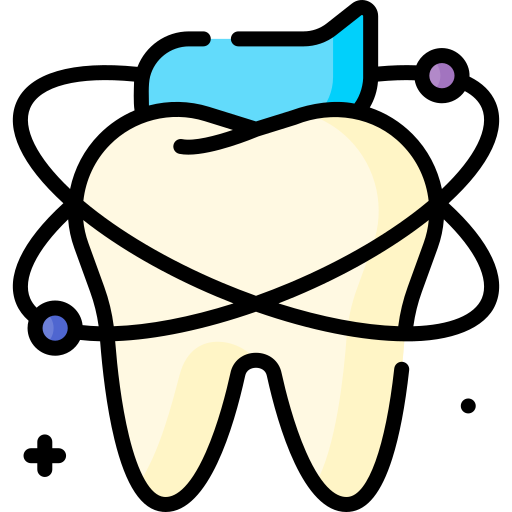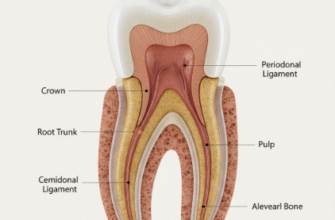Many of us think of a healthy smile primarily in terms of aesthetics – bright, white teeth that look good in photos. While a confident grin is certainly a wonderful benefit, the importance of good oral health stretches far deeper, intertwining with our overall physical well-being in ways we might not always consider. It’s not just about avoiding a toothache; it’s about supporting your entire system, starting from the very gateway to your body: your mouth.
The Unseen Connection: More Than Just a Smile
Your mouth is a bustling ecosystem, home to millions of bacteria, most of which are harmless. However, just like any ecosystem, balance is key. When oral hygiene slips, certain types of bacteria can flourish, leading to issues like plaque buildup, cavities, and gum inflammation. This is where the connection to your broader health begins to become clearer.
Think of your gums as a protective barrier. When they become inflamed, a condition often referred to as gingivitis in its early stages, this barrier can be compromised. Inflamed gums may become tender, swollen, and prone to bleeding. This local inflammation doesn’t always stay local. The body’s response to persistent inflammation, even in the mouth, can have wider implications. While direct causal links to specific severe diseases are complex and best discussed with medical professionals, it’s generally understood that chronic inflammation is not beneficial for overall health.
Furthermore, a compromised gum barrier can make it easier for some oral bacteria to find their way into the bloodstream. Once in circulation, these bacteria can travel to other parts of the body. While your immune system is designed to handle such invaders, a constant stream from an unhealthy mouth can put extra strain on your body’s defenses. Maintaining good oral hygiene helps keep these bacterial populations in check and supports your gums in their role as a strong defense line.
Another important link is nutrition. If you have painful teeth, missing teeth, or ill-fitting dentures, your ability to chew a wide variety of foods can be significantly hampered. You might find yourself avoiding harder, crunchier foods like fresh fruits, vegetables, and nuts, which are packed with essential nutrients. Over time, this can lead to a less balanced diet, potentially impacting your energy levels, immune function, and overall vitality. A healthy, comfortable mouth allows you to enjoy a diverse range of foods, fueling your body effectively.
Defining a Truly Healthy Mouth
So, what does a genuinely healthy mouth look and feel like? It’s more than just the absence of pain. Here are some key indicators:
- Healthy Gums: Your gums should be firm, pink, and fit snugly around your teeth. They shouldn’t bleed when you brush or floss, unless perhaps you’re being overly aggressive.
- Strong Teeth: Teeth should be free from cavities and excessive wear. They should feel stable, not loose.
- Fresh Breath: While occasional morning breath or breath after strong foods is normal, persistent bad breath can be a sign of underlying oral health issues, such as gum problems or trapped food particles.
- Comfortable Function: You should be able to eat, speak, and swallow without pain or discomfort. Sensitive teeth that react strongly to hot, cold, or sweet things might indicate a problem.
- Clean Feeling: Your mouth should generally feel clean. A constantly sticky or furry feeling, even after brushing, might suggest plaque buildup.
Achieving and maintaining these qualities is an ongoing process, but one that pays dividends for your entire well-being.
Your Daily Toolkit: Mastering Oral Hygiene
The good news is that the foundations of a healthy mouth are built on simple, consistent daily habits. You don’t need fancy gadgets, just the right techniques and dedication.
Brushing Basics: The Right Way
We all brush our teeth, but are we doing it effectively? Proper brushing is your first line of defense against plaque, that sticky film of bacteria that constantly forms on your teeth. Aim to brush at least twice a day, ideally in the morning after breakfast and before bed. Each brushing session should last for a full two minutes – try timing yourself with your phone or an electric toothbrush with a built-in timer. Many people rush this crucial step.
Use a soft-bristled toothbrush. Medium or hard bristles can be too abrasive and may damage your gums and tooth enamel over time. The size and shape of your brush head should allow you to reach all areas of your mouth comfortably. Replace your toothbrush, or toothbrush head for electric users, every three to four months, or sooner if the bristles become frayed or if you’ve been sick.
When it comes to technique, hold your brush at a 45-degree angle to your gums. Use gentle, short strokes – back and forth or in small circular motions – to clean the outer, inner, and chewing surfaces of all your teeth. Don’t scrub too hard, as this can lead to gum recession and tooth sensitivity. Pay special attention to the gumline, where plaque tends to accumulate. And don’t forget to gently brush your tongue to remove bacteria and help freshen your breath.
Choose a fluoride toothpaste. Fluoride is a mineral that helps strengthen tooth enamel and make it more resistant to acid attacks from bacteria and sugary foods, thus helping to prevent cavities.
Flossing: The Unsung Hero
If brushing is the star player, flossing is the essential supporting act that often gets overlooked. Your toothbrush bristles, no matter how well you brush, simply cannot effectively clean between your teeth or under the gumline. These are prime spots for plaque and food particles to hide, leading to cavities and gum problems. That’s why flossing at least once a day is non-negotiable for optimal oral health.
To floss effectively, take about 18 inches of floss and wind most of it around one middle finger, and the rest around the middle finger of your other hand. Hold the floss tautly between your thumbs and forefingers. Gently guide the floss between your teeth using a gentle rubbing or sawing motion. Be careful not to snap the floss into your gums. When the floss reaches the gumline, curve it into a C-shape against one tooth. Gently slide it into the space between the gum and the tooth. Hold the floss firmly against the tooth and gently rub the side of the tooth, moving the floss away from the gum with up-and-down motions. Repeat this process for all your teeth, including the back sides of your last molars. Use a fresh section of floss as you move from tooth to tooth.
If you find string floss difficult, interdental brushes, floss picks, or water flossers can be effective alternatives. Ask your dental hygienist for recommendations suitable for you. It might take a little practice to get the hang of it, but the benefits are well worth the effort.
The Power of Your Plate: Diet and Dental Health
What you eat and drink has a direct impact on your teeth. Sugary foods and drinks are a major culprit in tooth decay. Bacteria in your mouth feed on these sugars, producing acids that attack your tooth enamel. The more frequently you expose your teeth to sugar, and the longer the sugar stays in contact with your teeth, the higher your risk of cavities. This includes obvious sources like sweets, cakes, and sugary sodas, but also hidden sugars in processed foods, sauces, and even some snacks marketed as healthy.
Acidic foods and drinks, such as citrus fruits, tomatoes, pickles, and carbonated beverages, even sugar-free ones, can also erode tooth enamel over time. While many acidic foods are nutritious, it’s about moderation and how you consume them. Try to eat them as part of a meal rather than snacking on them throughout the day. Rinsing your mouth with plain water after consuming sugary or acidic items can help neutralize acids and wash away food particles. Waiting about 30 minutes after consuming acidic items before brushing can also help protect enamel, as enamel is slightly softened immediately after acid exposure.
On the positive side, a balanced diet rich in vitamins and minerals supports healthy teeth and gums. Foods rich in calcium, like dairy products such as milk, cheese, and yogurt, as well as leafy greens and almonds, help build strong teeth and bones. Phosphorus, found in eggs, fish, and lean meat, is also important for dental health. Crunchy fruits and vegetables like apples, celery, and carrots can help clean teeth surfaces as you chew, and they also stimulate saliva production. Saliva is your mouth’s natural defense mechanism; it helps wash away food particles, neutralize acids, and contains minerals to help repair early enamel damage.
And don’t forget the simplest yet most effective drink: water. Drinking plenty of water throughout the day, especially if it’s fluoridated, helps keep your mouth moist, rinses away food debris, and supports saliva production. It’s the best beverage choice for your teeth and your overall health, helping to dilute sugars and acids from other foods and drinks.
Beyond the Bathroom Sink: Professional Care
Even with the most diligent home care routine, regular visits to your dental team are essential. Professional cleanings and check-ups play a vital role in maintaining oral health and catching potential problems early, when they are often easier and less invasive to address.
Most people benefit from a dental check-up and cleaning every six months, but your dentist or hygienist will recommend a schedule that’s best for your individual needs. During a professional cleaning, the dental hygienist will remove hardened plaque, also known as tartar or calculus, that you can’t remove with brushing and flossing alone. Tartar buildup can lead to gum inflammation and needs to be professionally scaled away. They will also polish your teeth to remove surface stains, leaving your mouth feeling exceptionally clean and smooth.
The check-up part of the visit involves a thorough examination of your teeth, gums, tongue, and other soft tissues in your mouth by the dentist. They will look for signs of cavities, gum disease, wear patterns, and other potential oral health issues. Dental X-rays may be taken periodically to detect problems that aren’t visible to the naked eye, such as decay between teeth, issues with tooth roots, impacted teeth, or bone loss around the teeth. Early detection is absolutely key. For instance, a small cavity caught early can often be treated with a simple filling, preventing it from growing larger and potentially requiring more complex and costly treatment later on, or even leading to tooth loss.
Consistent daily oral hygiene, including thorough brushing and daily flossing, forms the bedrock of preventing common dental concerns. When combined with regular professional check-ups and cleanings, this proactive approach not only safeguards your smile but also significantly supports your overall health. Think of these practices as small, manageable daily investments that yield substantial long-term well-being benefits. These routine steps are your best defense against many oral health troubles.
The Ripple Effect: How a Healthy Mouth Boosts Overall You
The benefits of prioritizing your oral health ripple outwards, touching many aspects of your daily life and overall sense of well-being. When your mouth is healthy, you’re less likely to experience the discomfort of toothaches, sensitive teeth, or sore gums, which can significantly detract from your quality of life. This freedom from oral pain allows you to enjoy your food, speak clearly, and focus on your daily activities without nagging distractions or the dread of an impending dental issue.
As mentioned earlier, a healthy mouth allows for better nutrition. Being able to chew a wide variety of foods comfortably and efficiently means you’re more likely to consume a balanced diet, providing your body with the essential vitamins, minerals, and fiber it needs to thrive. Proper chewing is also the first crucial step in good digestion. When food is broken down effectively in the mouth, it makes the rest of the digestive process smoother and nutrient absorption more efficient.
And let’s not forget the psychological impact, which can be profound. A healthy smile can be a huge confidence booster. When you feel good about your smile – its appearance, its freshness, its health – you’re more likely to smile freely, engage openly in social interactions, and feel more self-assured in both personal and professional settings. This positive self-perception can enhance your relationships, improve communication, and contribute to a more positive and outgoing outlook on life in general.
Embracing a Healthier Future, One Smile at a Time
The connection between healthy teeth and a healthy you is undeniable, though often subtle in its daily workings. Your oral health is not an isolated aspect of your body; it’s an integral, dynamic part of your overall system. By adopting simple yet consistent oral hygiene habits like brushing twice daily with fluoride toothpaste, flossing once a day, making mindful dietary choices that limit sugar and acid exposure, and seeking regular professional dental care for check-ups and cleanings, you’re not just looking after your teeth and gums – you’re making a profound investment in your general health and happiness.
So, the next time you pick up your toothbrush or reach for that floss, remember that you’re doing more than just polishing your pearly whites or removing food debris. You’re taking a positive, proactive step towards a healthier, more vibrant you, from the inside out. A healthy mouth truly does support a healthy body, contributing to a life with more comfort, more confidence, and more reasons to smile.








